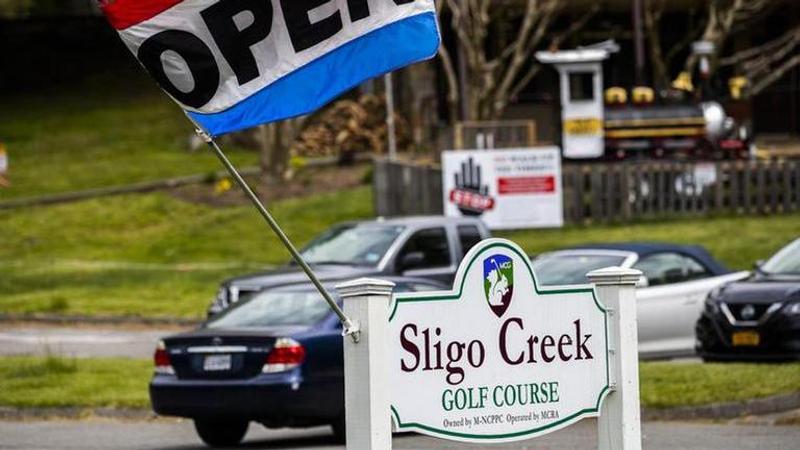Published 11:25 IST, May 14th 2020
US: Virginia, Maryland suburbs aligned with DC in COVID response
The allure was tempting: Haircuts were to be had, as was the chance to drink a beer at an outdoor bar after governors in Maryland and Virginia agreed to loosen weekslong lockdown restrictions because of the coronavirus.

The allure was tempting: Haircuts were to be had, as was the chance to drink a beer at an outdoor bar after governors in Maryland and Virginia agreed to loosen weekslong lockdown restrictions because of the coronavirus. But unlike other areas of the country that are itching to reopen, wealthy suburbs in northern Virginia and Maryland are insisting on staying shut down.
The decision follows a longstanding pattern in which the affluent areas bordering Washington, D.C., have acted more in concert with each other and the nation's capital than with their own states.
D.C. Mayor Muriel Bowser on Wednesday extended the city’s stay-at-home order until June 8, citing a continuing increase in COVID-19 cases. Virginia and Maryland's Montgomery and Prince George's counties are staying shut down for at least the next couple of weeks, citing coronavirus case numbers that are disproportionately higher than the rest of their states.
Maryland Gov. Larry Hogan said Wednesday that while he is allowing a Phase One reopening for his state on Friday, he also is allowing Montgomery and Prince George's counties to move at their own pace.
Earlier this week, Virginia Gov. Ralph Northam said his state's Phase One can also begin on Friday. Phase One allows barbershops and hair salons to reopen as well as limited outdoor seating at bars and restaurants and low-capacity retail shopping.
Northern Virginia, though, will remain at “Phase Zero” with full restrictions still in place for at least two more weeks after the region petitioned for an exemption.
Northam, who previously urged a unified approach for the entire state, said a two-pronged approach to reopening is justified by the numbers. While acknowledging that the percentage of positive tests is falling throughout the state, he noted that the percentage in northern Virginia has dropped only to 25%, while in the rest of Virginia it has fallen to 10%.
But there are other factors at play. Residents of the wealthy suburbs have the highest median incomes in the nation, and, in northern Virginia especially, a large percentage of workers are employed in high-tech and government fields that allow them to easily do their jobs from home, unlike workers in the service economy.
“Northern Virginia is more tolerant of an extension of restrictions because it’s a different economy, different labor market,” said Mark Rozell, a political scientist at George Mason University in northern Virginia.
The reality, too, is that the economies of Maryland and Virginia are connected to Washington, D.C.
Andy Shallal, the owner of the Busboys and Poets chain of restaurants and bookstores, has branches in all three places.
Shallal said Bowser is right to maintain a conservative stance. Governors, and de facto governors like Bowser, “are getting pressure from all sides,” he said. “For her to open would be politically inappropriate at this time.”
Nevertheless, Shallal said that once northern Virginia allows his Arlington restaurant to open for outdoor patio dining, he plans to take advantage.
“It’s a good chance for a trial run of some of the safety measures we’ve been installing,” he said.
In the D.C. region, the city and six counties surrounding it — including two in Maryland and four in Virginia — have seen more than 16,000 new COVID-19 cases and nearly 750 deaths in the past two weeks.
One of the key ways in which states determine their readiness for reopening is through increased testing, along with a downward trend in coronavirus cases over a two-week period. But while Virginia has increased testing, Maryland saw a decrease in tests administered over the past week, an AP analysis shows.
Marc Elrich, executive of Maryland's Montgomery County, said reopening efforts must be coordinated at the local level.
“Our borders are so fluid,” he said. “So, say somebody opens a giant mall in northern Virginia, it’s very likely that people from all over the place are going to be going there. Until you know that you’ve got control over the virus in your population, that’s not going to be a good thing.”
Elrich said he understands that “a vocal minority” is unhappy with the restrictions but pointed to polling showing that the overwhelming majority of people prefer that the state continue to operate under a stay-at-home order.
Shallal is also not unaware of the tension between the public-health crisis and the economic crisis.
“It’s getting a little weird, honestly,” he said. “It started as a medical issue and now it’s becoming a political issue mixed with a medical issue.”
Hogan spokesman Michael Ricci said the governor supports those areas that feel they aren't ready to open. He said the administration is encouraging local leaders in different parts of the state "to make the plans and decisions that are best for their residents.”
Northam's decision to formally exempt northern Virginia from entering Phase One has for some underscored the prickly divide between the region, known locally as NoVa, and the rest of Virginia, or RoVa.
Republican House Minority Leader Todd Gilbert, who represents parts of the Shenandoah Valley, said he took notice when Northam used the “rest of Virginia” phraseology to justify an accommodation for northern Virginia.
“In this context it just reinforces that when rural Virginia was asking to open early, he said no, but when northern Virginia asked to open late, he said yes,” Gilbert said.
Updated 11:25 IST, May 14th 2020




